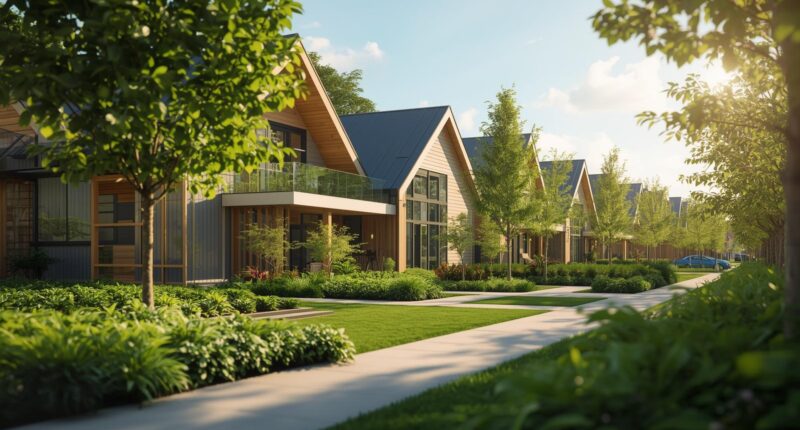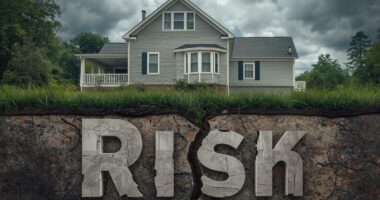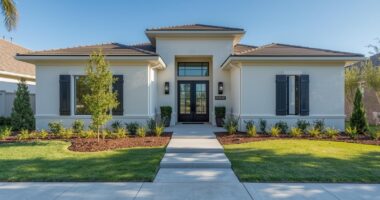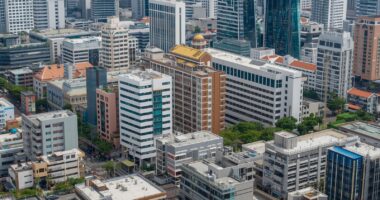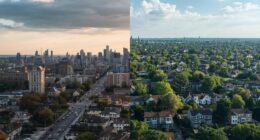Sustainable Neighborhoods: Real Estate for Eco-Conscious Buyers
Introduction: The Future of Eco-Friendly Living
As environmental awareness grows, more homebuyers are turning toward sustainable neighborhoods — communities designed with eco-friendly principles, renewable energy, and long-term environmental balance.
Today’s buyers don’t just want beautiful homes; they want properties that reduce carbon footprints, promote well-being, and save on energy costs. For eco-conscious buyers, sustainable real estate is both a smart investment and a lifestyle choice.
This article explores how sustainable neighborhoods are redefining modern real estate and how to find the perfect green home that aligns with your values.
What Are Sustainable Neighborhoods?
Sustainable neighborhoods are communities built to minimize environmental impact and enhance the quality of life for residents.
They combine eco-friendly architecture, renewable resources, green spaces, and efficient public infrastructure.
Core Features of Sustainable Real Estate
-
Energy-efficient homes powered by solar or wind energy
-
Water conservation systems like rainwater harvesting
-
Recycled or locally sourced construction materials
-
Walkable layouts reducing dependence on cars
-
Access to public transport, parks, and community gardens
These communities promote harmony between modern living and environmental sustainability — creating homes that are both luxurious and responsible.
Table – Sustainable vs. Traditional Neighborhoods
| Feature | Sustainable Neighborhood | Traditional Neighborhood |
|---|---|---|
| Energy Source | Solar, wind, or renewable energy | Mainly fossil fuels |
| Building Materials | Eco-friendly, recycled, local | Conventional concrete and steel |
| Water Use | Rainwater systems, low-flow fixtures | High consumption, wasteful design |
| Transportation | Walkable, cycling paths, EV charging | Car-dependent, limited alternatives |
| Green Space | Parks, gardens, and natural buffers | Minimal or decorative landscaping |
A sustainable neighborhood isn’t just an environmental choice — it’s a financially smarter, healthier, and community-focused investment.
The Growing Demand for Eco-Conscious Real Estate
Eco-conscious living has shifted from a trend to a necessity.
With climate change, rising energy prices, and health concerns, buyers are actively seeking green-certified homes and eco-responsible communities.
Key Drivers of Demand
-
Rising awareness of climate impact
-
Government incentives for green construction
-
Lower utility and maintenance costs
-
Long-term property value appreciation
-
Desire for healthier living environments
Sustainable homes are proving that eco-friendly living can also be economically rewarding.
Step 1 – Evaluate Energy Efficiency
Energy efficiency is the foundation of sustainable living.
Before investing, buyers should assess how the property manages electricity and heating.
Energy Efficiency Checklist
-
Solar panels or renewable energy integration
-
Smart thermostats and lighting systems
-
Energy Star-rated appliances
-
Proper insulation and ventilation
-
Double-glazed windows for reduced heat loss
Homes with strong energy ratings significantly cut monthly bills and carbon emissions.
Learn how modern design enhances sustainable living in our article — Lifestyle-Driven Home Design Trends for 2025.
Step 2 – Consider Water and Waste Management
Water scarcity and pollution are growing concerns.
Sustainable neighborhoods often include advanced water management systems that make conservation easy and efficient.
Eco-Friendly Water Features
-
Low-flow faucets and toilets
-
Greywater recycling systems
-
Drip irrigation and drought-resistant landscaping
-
Rainwater harvesting tanks
Proper waste management — including recycling programs and composting centers — ensures a cleaner, circular economy at the neighborhood level.
Step 3 – Focus on Location and Connectivity
True sustainability extends beyond the home — it includes the surrounding community.
Walkable, well-connected neighborhoods encourage greener lifestyles by reducing car use and fostering community interaction.
Ideal Sustainable Location Traits
-
Access to public transportation
-
Nearby schools, markets, and healthcare
-
Pedestrian- and bike-friendly streets
-
Mixed-use developments for live-work balance
A sustainable location saves time, money, and the environment — enhancing both quality of life and investment value.
Step 4 – Look for Green Certifications
When buying sustainable real estate, certifications help verify the developer’s commitment to eco-friendly standards.
Common Green Certifications
-
LEED (Leadership in Energy and Environmental Design)
-
BREEAM (Building Research Establishment Environmental Assessment Method)
-
Energy Star Homes Certification
-
WELL Building Standard
These certifications assure buyers that the property meets high environmental and efficiency benchmarks.
Explore detailed global green certifications at U.S. Green Building Council (USGBC) — the authority behind LEED-certified developments.
Step 5 – Check for Community Green Spaces
Greenery doesn’t just beautify a neighborhood — it improves air quality, reduces stress, and enhances biodiversity.
Features of Eco-Focused Communities
-
Shared gardens and urban farms
-
Community parks and tree-lined walkways
-
Natural stormwater systems
-
Eco-friendly playgrounds for children
These features create healthier, happier, and more sustainable neighborhoods for families and future generations.
Step 6 – Analyze Long-Term Financial Benefits
Buying into a sustainable neighborhood isn’t only about ethics — it’s also a wise financial move.
Eco-friendly properties tend to hold or increase their value faster due to growing market demand.
Financial Advantages
-
Lower energy and water bills
-
Reduced maintenance costs
-
Government tax incentives for green homes
-
Higher resale value due to eco-certifications
Eco-conscious real estate is the perfect blend of responsibility and profitability.
Step 7 – Engage with Developers Who Prioritize Sustainability
When choosing a property, evaluate the developer’s sustainability practices.
Look for transparency, quality materials, and eco-friendly construction techniques.
Questions to Ask Developers
-
What sustainability certifications do your projects hold?
-
How is waste managed during construction?
-
Are local and recycled materials used?
-
Do you incorporate renewable energy or smart technologies?
Partnering with responsible developers ensures your investment supports a greener, more sustainable future.
Conclusion: Investing in a Greener Tomorrow
The rise of sustainable neighborhoods is reshaping the real estate landscape.
For eco-conscious buyers, these communities represent more than homes — they represent a commitment to a better planet.
By prioritizing energy efficiency, green spaces, and smart infrastructure, you can enjoy a modern lifestyle while protecting the environment.
Sustainable living is not just a trend — it’s the future of real estate.
Invest today in an eco-friendly community and become part of the movement toward a cleaner, healthier, and wealthier world.
